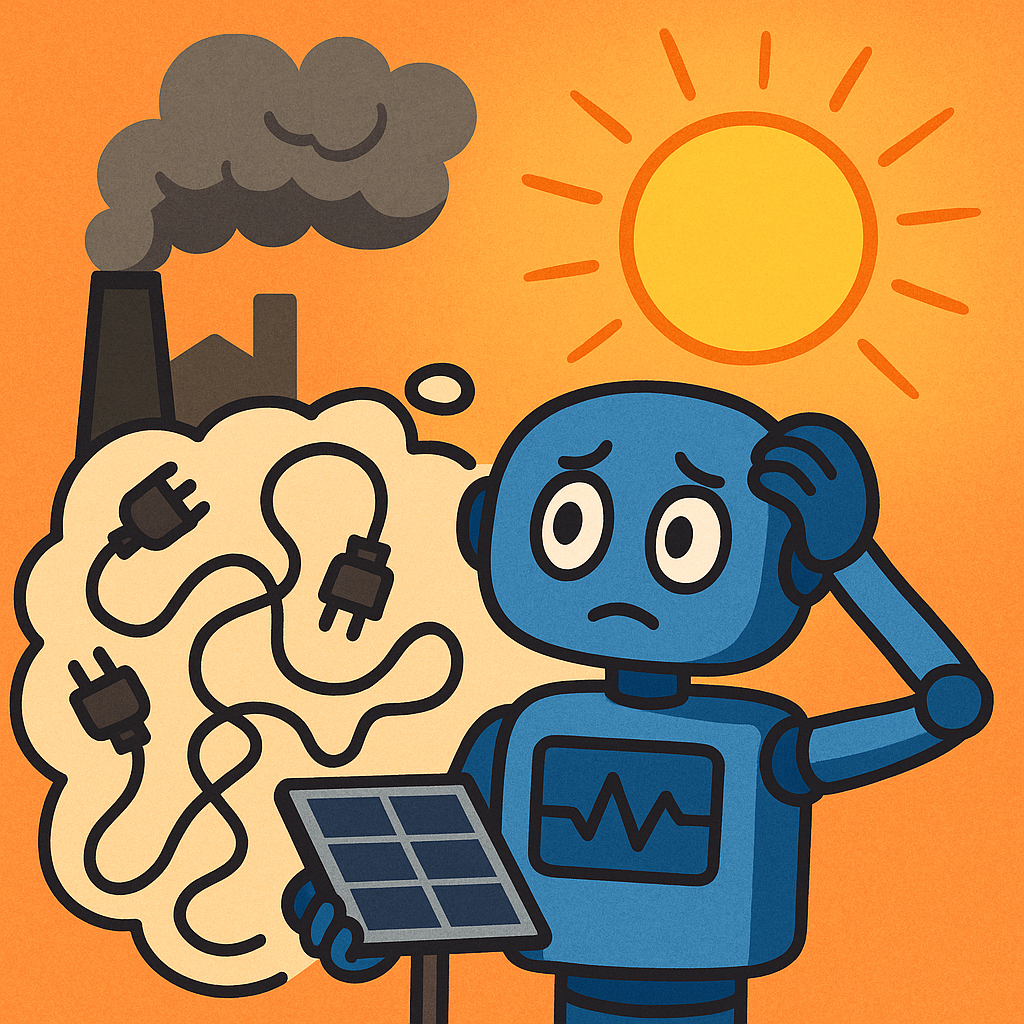The Carbon Cost of Intelligence: Unpacking AI’s Environmental Impact

Natural Sciences | The Varrock Street Journal
Good morning, readers!
Artificial Intelligence has exploded into the spotlight—streamlining industries, transforming communication, and opening doors to everything from self-driving cars to advanced medical research.
But behind every AI breakthrough is a less-discussed reality: energy consumption and its environmental toll.
Today, we’re looking into the hidden carbon footprint of AI, what the data tells us so far, what scientists predict for the future, and what steps are being taken to make AI more sustainable.
⚡ The Problem: AI Needs Massive Energy
Training advanced AI models—like those powering large language systems, image generators, and real-time assistants—requires enormous computing power. That means:
- Millions of kilowatt-hours of electricity per training cycle
- Cooling vast data centers that generate intense heat
- Use of high-performance hardware (GPUs/TPUs) with short lifespans
- Growing global demand as AI expands into nearly every sector
🧠 Example:
Training a single large language model (like GPT-3) was estimated to emit over 500 tons of CO₂—roughly equivalent to 110 gasoline-powered cars running for a year.
🌎 Global Impact: Where and How AI Leaves Its Mark
The environmental footprint of AI depends largely on:
- Location of data centers: Those powered by fossil fuels (e.g., coal, natural gas) have a much higher carbon footprint than those powered by renewables.
- Frequency of model use and updates: Frequent retraining burns more energy.
- Hardware production and disposal: Mining rare earth elements, building chips, and e-waste disposal carry environmental costs of their own.
📍 Geography matters:
Data centers in Iceland, Scandinavia, and parts of Canada benefit from cooler climates and abundant hydropower.
Meanwhile, centers in warmer, fossil-fuel-dependent regions may use more power for cooling and carbon-heavy electricity.
🔮 What the Future Holds
As AI becomes more embedded in daily life, researchers predict:
- Exponential demand for compute and energy
- More water use for cooling (some data centers require millions of gallons annually)
- AI-driven energy usage possibly rivaling that of major industries like aviation or steel by 2030
However, there’s also hope: AI is already being used to optimize energy systems, reduce waste, and track emissions—meaning it can be part of the solution too.
♻️ What’s Being Done to Fix It
Several actions and innovations are already in motion to reduce AI’s carbon footprint:
✅ Green AI Research
- Focused on optimizing models to use less energy with the same performance
- Encouraging researchers to publish energy and carbon costs alongside results
✅ Energy-Efficient Hardware
- New generations of processors that consume less power per operation
- Specialized chips for AI that reduce redundancy and improve cooling efficiency
✅ Renewable-Powered Data Centers
- Tech giants like Google, Microsoft, and Amazon are working toward 100% renewable-powered cloud computing
- Some centers use liquid immersion cooling to drastically reduce water and energy usage
✅ Carbon Offsetting and Credits
- Investment in reforestation, carbon capture, and renewable energy projects
- Some firms are adopting “carbon-aware scheduling” to run models when clean energy is most available
😲 Did You Know?
- A 2022 report showed that data centers consume ~1–2% of the world’s electricity—and that number is rising fast.
- AI is helping researchers find new materials for better batteries, making renewable energy storage more feasible.
- Some AI models are now being trained to predict environmental disasters, helping mitigate climate damage.
Here is a podcast looking at this topic and the pros and cons associated with climate change.
🧠 Reflection Questions
- Should AI research be required to include energy and emissions data alongside performance metrics?
- How can governments support sustainable AI development through policy or funding?
- Could future AI systems help eliminate the carbon footprint of their predecessors?
👋 Final Thoughts
AI holds incredible promise—but like any powerful tool, it comes with responsibility. As we build smarter machines, we must also build smarter systems to support them—ones that don’t just solve problems but protect the planet along the way.
📚 References
- MIT Technology Review. (2023). The Hidden Carbon Cost of AI. https://www.technologyreview.com
- Nature. (2022). Energy and Policy Considerations for Deep Learning. https://www.nature.com
- International Energy Agency (IEA). (2023). Data Centres and Data Transmission Networks. https://www.iea.org
- Stanford HAI. (2023). The State of AI and Sustainability. https://hai.stanford.edu
📲 Smarten up with sustainability in mind:
- Instagram: @thevarrockstreetjournal
